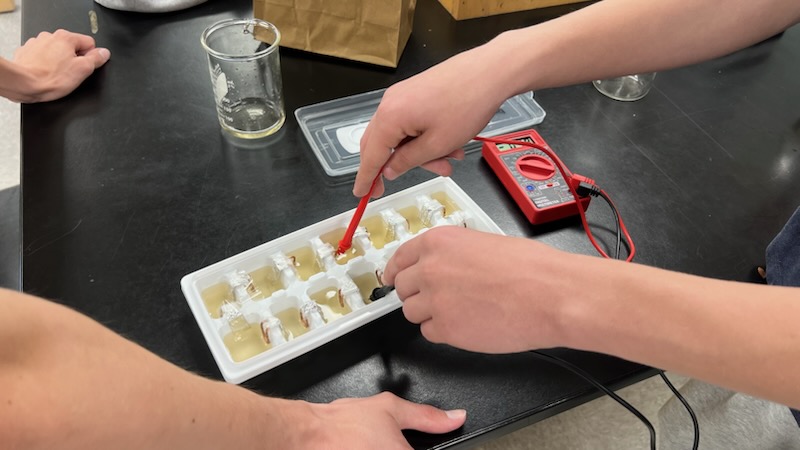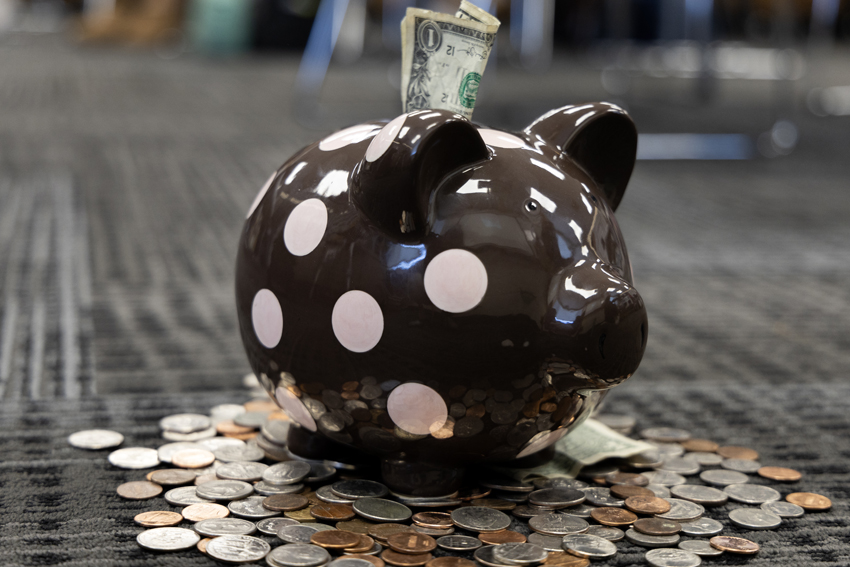Although teens represent a fraction of drivers on the road, they are responsible for the majority of traffic accidents. As a result of such statistics, the law requires young drivers to spend more time behind the wheel to gain experience before obtaining a driver’s license.
Teens must have a permit for at least six months before testing for a license. With a permit, teens must log 50 hours, in addition to 10 hours at night, of adult-supervised driving practice.
“I think it is very important to have your license because it’s annoying to rely on others to go places,” Sasha Arroyo, ’07, said. “I also think it is kind of true that teens are involved in most car accidents. We pay more attention to music, iPods and friends then the vehicle and the road.”
Hundreds of teens head daily to the Department of Motor Vehicles’ (DMV) in hope for a driver’s license or permit.
“An average of 60% of driver’s license applicants are under 18 years old,” Jason Denker, Hanford DMV, behind the wheel supervisor, said. “Of the two-part test (written and behind the wheel) most pass the written (to receive a permit) on the first visit. Only about 40% of teen drivers pass the behind the wheel (for a license) on their first try. Most teens pass both by the second try and only about 8-10% need a third opportunity to pass.”
Stage 1: Getting started
Students can get their permit as early as six months prior to their 16th birthday, with a completed DMV application form, signed by a parent or guardian. Drivers must then complete an education course. Road sign and vision tests are required with a payment of $26 application fee.
After teens pass the preliminary tests, they take a written 50-question test, which is graded on site. Unlike a license, a permit requires an adult’s supervision, must be at least 21 with a valid license.
Teens must then sign up with a driving school to find an instructor to be mentored and attend sessions, totaling 6 hours, with the certified instructor.
“What I look forward to in driving is getting out of the house and being able to go anywhere without relying on your parents,” Tyler Graham, ’09, said. “I also think it (15 and a half) is a good age to get your permit because any younger you’re unsure of your abilities.”
In order to obtain a driver license, teens must be at least 16 and pass a behind-the-wheel driving portion.
Stage 2:Provisional license
Once a license has been issued, the law requires certain conditions to be followed. For the first 12 months (or until 18 years old), no passengers under 20 years old are allowed to transport others unless accompanied by a licensed driver age 25 or older. For a full listing of rules, laws and regulations, teen drivers need to consult with their local DMV.
“Before I get my license I am going to drive around a lot to familiarize myself with the car,” Rachel Balant, ’08, said. “I also hate the rule that you cannot drive people for a year because you are going to drive them sooner or later. I thought the six months was enough but a year is too much.”
For the first 12 months, students under 18 are not permitted to drive between 11 P.M.-5 A.M., unless accompanied by licensed driver 25 or older. Exceptions are made for school, work, family and medical needs when reasonable transportation facilities are inadequate.
“Usually between 1-5 A.M. I don’t mind not driving,” Josh Dunn, ’09, said. “The 11 P.M. bugs me because if you want to see a late movie it is a hassle to worry about being pulled over.”
Teen drivers must maintain a clean driving record. Violations such as speeding or failing to wear a seat belt can cause license restrictions and suspensions after two or more DMV warnings.
Stage 3:Full license
A provisional license becomes a full license when drivers become 18-years-old, have no DMV or court-ordered restrictions, suspensions or probations. Drivers do not need to return to the DMV to obtain a full license.
Additionally, drivers under 21 are still subject to a one-year license suspension if their blood alcohol concentration exceeds 0.01 percent when driving.
“Rules are created for their safety,” Denker said, “and the reason why there are so many is because as time goes on the DMV finds out that changes or restrictions need to be implemented for the safety of the kids.”
Teens are more apt to break the rules frequently mainly due to lack of maturity,” Denker said, “and because after awhile they feel comfortable and overly confident behind the wheel and get relaxed about rules and how they drive. Teens tend to take driving lightly. They are easily distracted and influenced by friends to take unnecessary risks, like speeding and racing.”






